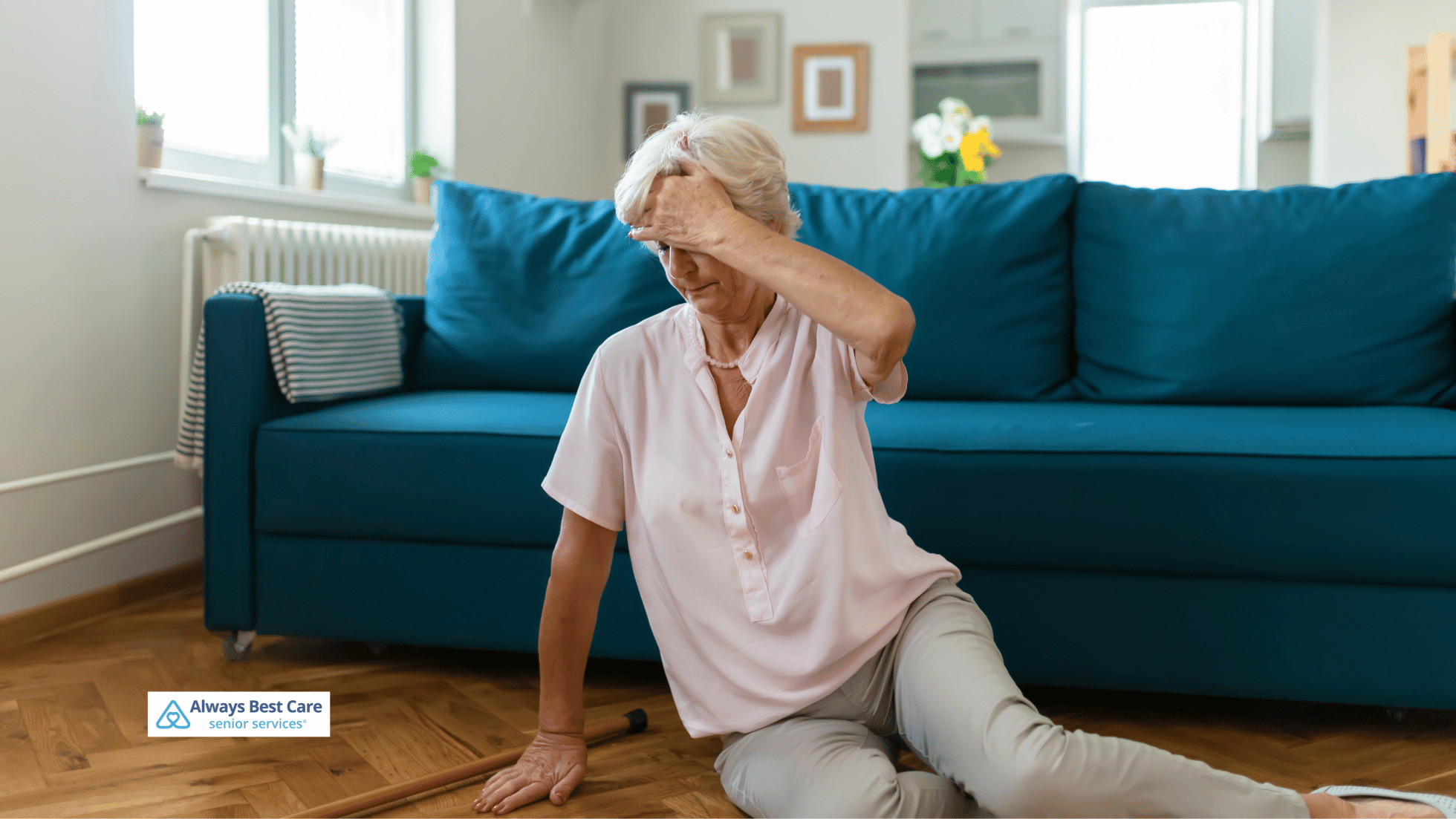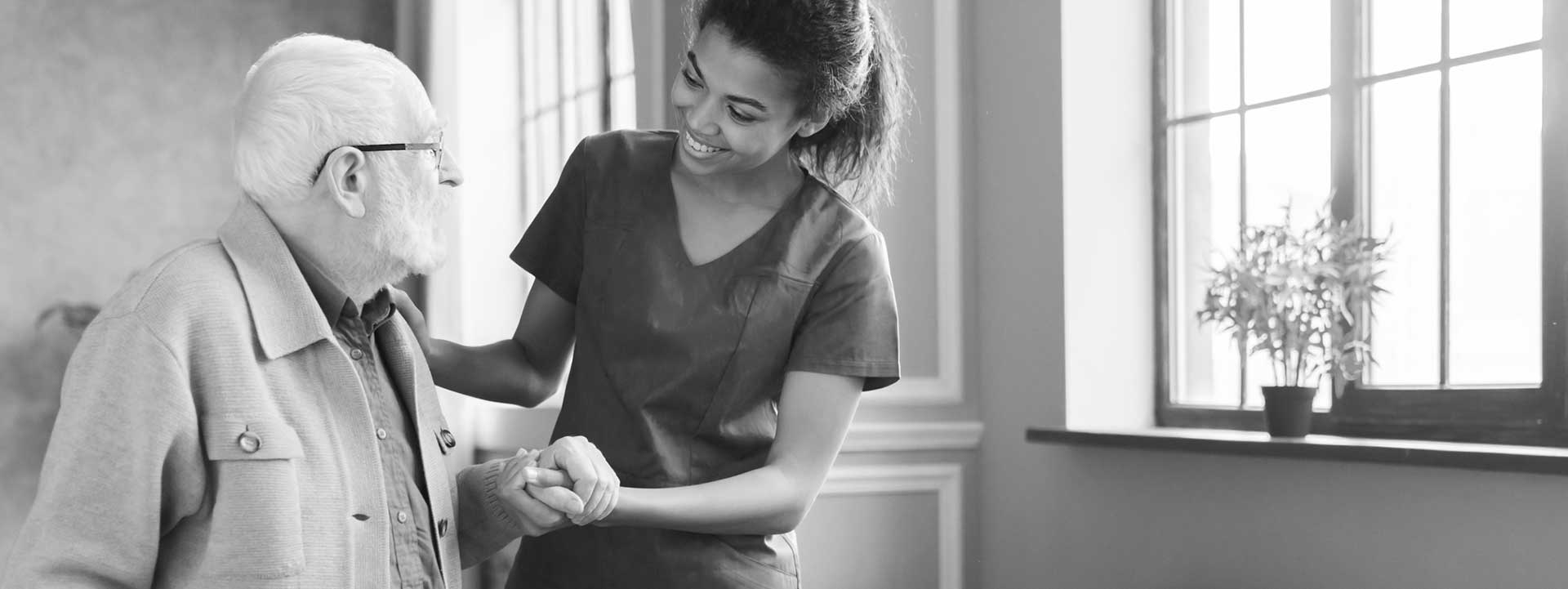9 Commonly Overlooked Fall Risks for Seniors

Falls among seniors are a common concern that can lead to serious health issues.
While many people focus on obvious factors like slippery floors or stairs, several less obvious causes can increase fall risks. By addressing these overlooked causes, seniors can enjoy a safer and more stable environment, reducing the likelihood of accidents.
Below are nine often unnoticed causes of falls in seniors and how they can be avoided!
Table of Contents
Understanding Fall Hazards and the Importance of a Safe Home Environment
Fall hazards are anything in a senior’s environment that could increase the risk of tripping, slipping, or losing balance. These hazards often go unnoticed until an accident happens, but taking proactive steps to identify and remove them can significantly prevent falls.
Common fall hazards include loose rugs, uneven flooring, cluttered walkways, and poorly lit areas. Even small obstacles, such as a pet’s toys or an unsteady chair, can lead to a dangerous fall.
9 Overlooked Causes of Falls in Seniors
1. Vision Impairments
As we age, vision tends to decline, and changes like cataracts or glaucoma can make it difficult to see obstacles clearly. Blurry vision, reduced depth perception, and sensitivity to light can lead to missteps.
Regular eye exams are crucial for detecting vision changes early. Seniors should also ensure they wear the correct prescription glasses and consider using brighter lighting to improve visibility throughout the home.
2. Medication Side Effects
Many seniors rely on medications for various health conditions, but some medications can have side effects that contribute to falls. Dizziness, drowsiness, and unsteadiness are common reactions that make walking difficult.
It’s important to review medications regularly with a healthcare provider to identify any that may increase the risk of falls. Adjustments to dosages or switching to safer alternatives may help.
3. Muscle Weakness
Over time, the muscles responsible for balance and stability weaken. This muscle loss can make everyday movements, such as standing up or walking, more difficult and less steady.
To combat this, seniors can benefit from gentle strength-building exercises like chair squats or leg lifts. Regular physical activity, even simple exercises, helps improve strength and reduce the risk of falls.
4. Poor Footwear Choices
Wearing the wrong shoes can drastically affect stability. Shoes that are too loose, too tight, or without proper grip can cause tripping or slipping.
Seniors should wear shoes that offer good support, non-slip soles, and fit properly. Slippers, especially those without a back or support, should be avoided. Orthopedic shoes can also provide additional comfort and stability.
5. Inadequate Home Lighting
Dim lighting, especially in hallways and staircases, increases the chances of missing steps or tripping over unseen objects. Many seniors experience reduced night vision, making proper lighting even more important.
Installing brighter bulbs in key areas and adding night lights in bedrooms and bathrooms can make navigating the home much safer, especially during nighttime.
6. Clutter and Obstacles
A cluttered home can create multiple hazards for seniors. Items like loose rugs, electrical cords, or random clutter on the floor are tripping hazards.
To reduce the risk of falls, keeping the floors clear and ensuring rugs are secured with non-slip pads is essential. Furniture should be arranged to allow easy movement throughout the home. Keeping pathways clear ensures fewer obstacles to navigate.
7. Balance Issues
Age-related balance problems, often caused by vertigo or inner ear disorders, can increase fall risk.
Seniors should have their balance checked regularly by a healthcare professional. Exercises designed to improve balance, such as tai chi or standing on one foot, can help regain stability. If necessary, physical therapists can provide tailored exercises that focus on improving balance and preventing falls.
8. Improper Use of Mobility Aids
Many seniors use canes, walkers, or other mobility aids to maintain independence. However, using these devices incorrectly can increase the risk of falls rather than prevent them.
Seniors need to receive proper training on how to use their mobility aids. A healthcare professional or physical therapist can adjust walkers or canes to the correct height and teach safe use techniques.
9. Hydration and Nutrition Deficiencies
A lack of proper hydration or nutrition can lead to dizziness, weakness, and fatigue—all of which contribute to falls. Dehydration is common among seniors, as the sense of thirst diminishes with age.
Encouraging seniors to drink plenty of water throughout the day and consume a balanced diet rich in vitamins and minerals can improve overall strength and stability. Staying hydrated and well-nourished helps maintain energy levels and reduces the chances of falling.
6 Benefits of a Hazard-Free Home for Seniors
Enhanced Independence
A well-maintained, safe home allows seniors to move around more confidently and perform daily tasks without relying on constant supervision. This fosters a greater sense of independence and dignity.
Reduced Risk of Injuries
Eliminating hazards like clutter, uneven flooring, and poor lighting decreases the likelihood of falls and other accidents. This helps seniors avoid painful injuries, such as fractures, sprains, and head trauma.
Increased Confidence and Peace of Mind
Seniors are often more at ease knowing their living environment is designed for their safety. This reduces anxiety about falling and helps them feel secure, especially when moving about their home alone.
Improved Health and Mobility
A safe environment promotes active living, as seniors can move around freely without fear of tripping or slipping. This encourages better mobility and physical health, leading to an overall improved lifestyle.
Support for Aging in Place
A hazard-free home can enable seniors to remain in their own homes longer, delaying or even avoiding the need for assisted living or nursing care. Seniors who value familiar surroundings and routines often prefer aging in place.
Relief for Family and Caregivers
Loved ones and caregivers experience less stress when they know a senior’s living environment is safe. This peace of mind allows for better focus on quality time rather than constant worry about potential accidents.
Safeguard Your Home with Always Best Care of Calgary NW!
Falls can have a lasting impact on the health and well-being of seniors, but with the right care and attention, many of these risks can be minimized.
At Always Best Care of Calgary, we’re committed to providing compassionate in-home care that prioritizes safety and independence for your loved ones. Our team of dedicated caregivers helps create a secure living environment, assists with daily tasks, and supports healthy living habits to prevent falls and promote overall well-being.
Contact Always Best Care of Calgary NW at (587) 601-0142 to learn more and schedule your free consultation.





